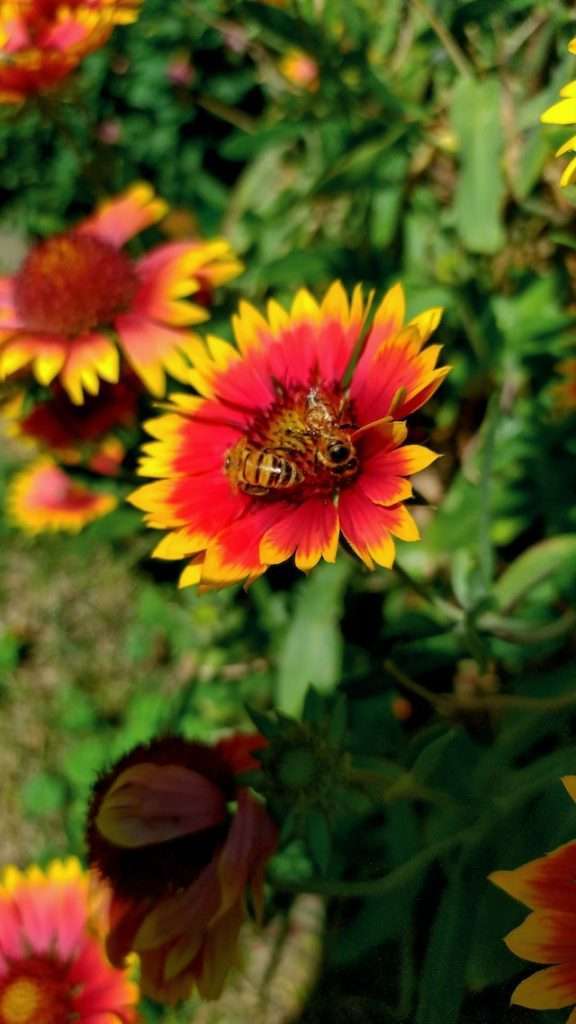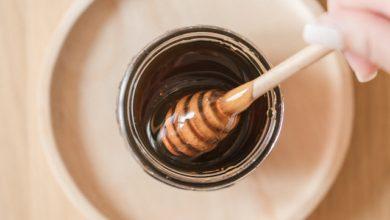What is Wildflower Honey?

Honey is one of the most popular sweeteners, and finding the right one can be difficult. Different honeys have different tastes and levels of sweetness, and the type you buy will depend not only on preference but also on your own needs. If you’re looking for a unique, sweet-tasting honey, consider trying wildflower honey.
Wildflower honey, also known as polyfloral honey, is all-natural honey collected from several different flower sources. Because it is made in such a way, it has a unique flavor that varies depending on the flower sources. Its main characteristic is its floral taste, making it ideal for many desserts and other recipes.
Definition of Wildflower Honey
Wildflower honey, as the name suggests, is made by bees that collect nectar from various wildflowers present in their surrounding environment. Unlike monofloral honey, which is derived from the nectar of a specific flower species, wildflower honey blends the essences and flavors of numerous flowers, resulting in a distinct and unique taste profile. Its composition may vary based on the types of wildflowers visited by the bees, the region, and the time of the year.
Characteristics of Wildflower Honey
Flavor:
- The flavor of wildflower honey can be described as robust, complex, and multifaceted. It presents a harmonious blend of floral, fruity, and herbal notes that vary depending on the specific wildflowers involved.
- Some common flavors found in wildflower honey include hints of lavender, clover, thistle, dandelion, and many others, contributing to its delightful and diverse taste.
Aroma:
- The aroma of wildflower honey often mirrors the characteristics of the surrounding flora. It emanates a captivating, natural fragrance that evokes memories of blooming meadows and sun-kissed gardens.
Color:
- The color of wildflower honey can vary greatly due to the diverse range of flowers visited by bees. It can range from light amber to dark brown, with intermediate shades of golden yellow and reddish hues.
The Uniqueness of Wildflower Honey
Among the different varieties, wildflower honey stands out for its unparalleled uniqueness.
How is Wildflower Honey Different?
Wildflower honey sets itself apart from other types of honey primarily due to its diverse botanical sources. Unlike monofloral honey, which is derived from the nectar of a single plant species, wildflower honey is created by bees that forage on a myriad of blooming wildflowers.
This creates a complex blend of floral flavors and a harmonious amalgamation of various nectar sources, resulting in a unique taste profile.

Factors Contributing to the Uniqueness of Wildflower Honey
- Diverse Botanical Sources: Wildflower honey owes its uniqueness to the extensive range of flowering plants from which bees collect nectar. The abundance of plant species ensures that the honey is rich in essential nutrients and enzymes derived from different botanical origins. This diversity in pollen sources not only enhances the honey’s nutritional value but also offers potential health benefits to those who consume it.
- Regional Variations: Another intriguing aspect of wildflower honey is its regional variations. Since it depends on the local flora, climate, and soil conditions, the taste, color, and aroma of wildflower honey can exhibit significant differences based on the specific geographic location. Bees foraging in a mountainous region might produce a more robust and intense honey, while those in a coastal area might yield a lighter and milder variant. This regional diversity allows individuals to explore a wide array of flavors unique to different parts of the world.
- Distinctive Taste and Aroma: The remarkable taste and aroma of wildflower honey further contribute to its distinctiveness. As the bees collect nectar from a variety of flowering plants, the resulting honey obtains a complex flavor profile that is both intriguing and delightful. The aroma of wildflower honey can be earthy, floral, or even mildly spicy, depending on the specific mix of nectar sources. These sensory characteristics make wildflower honey a versatile ingredient, suitable for both culinary and medicinal purposes.
Benefits of Consuming Wildflower Honey
From its nutritional value to its potential health benefits, wildflower honey offers much more than just a delicious taste. Let’s delve into the wonders of wildflower honey and understand why it deserves a place in your daily diet.
Nutritional Value of Wildflower Honey
Wildflower honey is not only a scrumptious treat but also a powerhouse of nutrients. Unlike processed honey, which is derived from a single flower source, wildflower honey is created from the nectar of various wildflowers, giving it a unique flavor profile and a diverse range of nutrients. Some of the essential nutrients found in wildflower honey include:
- Vitamins: Wildflower honey contains several vitamins, including B vitamins, vitamin C, and vitamin E, which contribute to various bodily functions and support overall health.
- Minerals: This natural sweetener is rich in minerals like potassium, calcium, magnesium, and iron, which are vital for maintaining healthy bones, muscles, and blood circulation.
Potential Health Benefits of Wildflower Honey
Besides its nutritional value, wildflower honey also offers numerous health benefits that make it a valuable addition to your diet. Let’s explore some of these benefits:
- Rich Source of Antioxidants: Wildflower honey is packed with antioxidants such as flavonoids and phenolic acids, which help protect the body against free radicals, reduce inflammation, and promote overall well-being.
- Antibacterial Properties: Studies have shown that wildflower honey exhibits natural antibacterial properties, thanks to its glucose oxidase enzyme that produces hydrogen peroxide. These properties can help fight against harmful bacteria and promote wound healing.
- Alleviation of Allergy Symptoms: Consuming wildflower honey can potentially alleviate allergy symptoms due to its trace amounts of pollen. By gradually exposing the body to small doses of pollen through local honey consumption, it is believed that one can build up a tolerance to seasonal allergies over time.
- Soothes Sore Throat and Cold Symptoms: Wildflower honey has long been used as a natural remedy for soothing sore throats and relieving cold symptoms. Its smooth texture and antimicrobial properties can provide relief from coughing, throat irritation, and congestion.
How Wildflower Honey is Produced
Among the various types of honey, wildflower honey offers a unique and exquisite flavor profile. Here, we will delve into the fascinating process of producing wildflower honey, exploring the beekeeping process, the significance of diverse flora for bees, and the methods used for harvesting and extracting this delicious golden nectar.
- Explanation of the Beekeeping Process:
Beekeeping, also known as apiculture, is an age-old practice that involves raising and caring for honeybees. To begin the process of producing wildflower honey, beekeepers carefully select suitable locations for their beehives. These locations should support a rich diversity of wildflowers, as they provide the nectar that bees collect and transform into honey.
Beekeepers place their hives in areas abundant with wildflowers, ensuring that the bees have easy access to the nectar they need to create honey. Once established, the bee colonies work tirelessly, with each bee playing a specific role in the hive. Worker bees travel from flower to flower, tirelessly collecting nectar and pollen, which will later become honey.
- The Importance of Diverse Flora for the Bees:
The significance of diverse flora in the production of wildflower honey cannot be overstated. Bees are highly dependent on a wide variety of flowers to obtain the specific nectar and pollen they require for their nutrition. Monofloral honey, derived from a single type of flower, may have its unique qualities, but wildflower honey is a product of nature’s blend, capturing the essence of various flowers.
The presence of diverse flora benefits the overall health and well-being of honeybees, as different flowers offer distinct nutritional properties. Each flower contributes its unique mix of vitamins, minerals, and antioxidants to the bees’ diet, enhancing their vitality and immune system. Moreover, the availability of a varied range of nectar sources helps to sustain honeybee populations by providing a continuous supply of food throughout the year.
- Harvesting and Extraction Methods:
When the beehives are filled with ripened wildflower honey, beekeepers begin the process of harvesting and extracting this liquid gold. With careful precision, the beekeeper carefully removes the honeycombs from the hive, taking care not to disturb the bees excessively.
Once the honeycombs are collected, the beekeeper extracts the honey through a process called honey extraction. This involves carefully uncapping the honeycomb cells to release the honey, then using a centrifugal force to separate the honey from the wax. Modern beekeepers typically use stainless steel honey extractors to achieve this process efficiently.
After the honey is extracted, it goes through a filtering process to remove any impurities, such as beeswax or bee parts, resulting in pure wildflower honey. The honey is then stored in airtight containers to preserve its rich flavor and prevent crystallization.
Determining the Quality of Wildflower Honey
When it comes to honey, wildflower honey is a popular choice among consumers. However, with so many options available in the market, determining the quality of wildflower honey can be a challenging task.
Recognizing Pure and Raw Wildflower Honey
Recognizing pure and raw wildflower honey is essential to ensure that you are getting a high-quality product. Here are a few indicators to look out for:
- Consistency: Pure wildflower honey tends to have a thick and rich consistency. It should not be too runny or watery.
- Color: The color of wildflower honey can vary depending on the nectar collected by bees from different wildflowers. It usually ranges from golden to amber. However, if the honey is crystal clear or has an unnatural color, it may have been processed or adulterated.
- Aroma: Wildflower honey has a distinctive floral aroma. It should have a pleasant scent that reflects the variety of flowers the bees have visited.
- Crystallization: Raw honey tends to crystallize over time. If you notice a layer of crystals at the bottom or throughout the honey, it is a good sign that it is in its natural and unprocessed state.
Factors to Consider When Purchasing Wildflower Honey
- Certification: Look for wildflower honey that is certified by reputable organizations such as the USDA Organic or Non-GMO Project. These certifications ensure that the honey meets specific standards and has been produced using sustainable and environmentally friendly practices.
- Packaging: Pay attention to the packaging of the wildflower honey you plan to purchase. It should be sealed properly to prevent any contamination. Transparent jars or containers allow you to examine the honey’s color and consistency before making a decision.
- Local and Organic Options: Consider opting for locally sourced wildflower honey. Local honey not only supports local beekeepers but also tends to have a more distinct flavor due to the unique mix of wildflowers in the area. Additionally, choosing organic wildflower honey ensures that it is free from pesticides and other harmful chemicals.
Remember, when purchasing wildflower honey, it is important to prioritize quality over price. Genuine and premium wildflower honey may be slightly more expensive, but the health benefits and the rich taste are worth the investment.
Conclusion
Wildflower honey is a unique, sweet-tasting honey that is perfect for adding sweetness and flavor to any dish. It contains many essential vitamins and minerals that can improve your health, as well as antibacterial and antioxidant compounds that can fight infection and reduce inflammation. Its versatility makes it a great addition to both sweet and savory dishes, and can be used as a natural sweetener for coffee and tea. If you’re looking for a delicious, all-natural honey, try wildflower honey!
FAQs
How is wildflower honey different from other types of honey?
- Unlike other types of honey, such as clover or orange blossom honey, wildflower honey is a blend of nectar collected from a variety of different flowering plants in a specific region. This blend results in a distinct and complex flavor profile, often featuring floral undertones.
Is wildflower honey organic?

- Whether wildflower honey is organic or not depends on the beekeeper’s practices. If the bees primarily forage in organic wildflower fields, where no pesticides or chemicals are used, then the honey can be considered organic. It is best to look for honey labeled as organic to ensure its production aligns with organic standards.
Can wildflower honey help with seasonal allergies?
- Some people believe that regularly consuming local wildflower honey might help alleviate symptoms of seasonal allergies. The theory is that consuming small amounts of the local pollen through honey may desensitize the body, reducing allergy symptoms over time. However, scientific evidence supporting this claim is limited.
How should I store wildflower honey?
- To maintain its quality, it is best to store wildflower honey in a cool, dry place, away from direct sunlight. Avoid exposing it to extreme temperatures as this may cause crystallization. It is not necessary to refrigerate honey, as it can remain fresh for an extended period if stored properly.
Can wildflower honey crystallize?
- Yes, like all raw honey, wildflower honey has a natural tendency to crystallize over time. Crystallization is a natural process and does not affect the quality or taste of the honey. To liquefy crystallized honey, gently warm the jar in a bowl of warm water until it returns to its liquid state.
Can children under one year old consume wildflower honey?
- No, it is not recommended to feed honey, including wildflower honey, to children under one year old. Honey can contain spores of bacteria called Clostridium botulinum, which can cause botulism in infants. Their digestive systems are still developing, making them more susceptible to the bacteria’s harmful effects.
How can I support local beekeepers and purchase wildflower honey?
- To support local beekeepers and purchase wildflower honey, look for farmers’ markets, local grocery stores, or specialty food shops that carry products from nearby apiaries. Additionally, some beekeepers may sell honey directly from their farms or through their websites for online ordering.
Can wildflower honey be used for cooking and baking?
- Absolutely! Wildflower honey’s distinct flavor makes it a versatile ingredient for both savory and sweet dishes. It can be used as a natural sweetener in baked goods, salad dressings, marinades, and even added to hot beverages like tea. Its complex flavor can enhance various recipes, providing a unique twist to your culinary creations.




